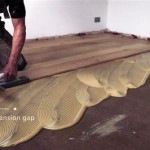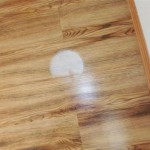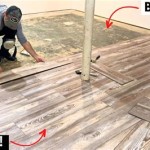Home Engineered Flooring: A Comprehensive Overview
Engineered flooring represents a significant advancement in flooring technology, offering a compelling alternative to solid hardwood and other traditional flooring options. It combines the aesthetic appeal of natural wood with enhanced durability, stability, and versatility, making it a popular choice for residential and commercial applications. Understanding the composition, advantages, and different types of engineered flooring is crucial for making informed decisions when selecting flooring materials for a home or building.
The core difference between engineered flooring and solid hardwood lies in its construction. Solid hardwood planks are made from a single piece of wood, while engineered flooring consists of multiple layers bonded together. This layered construction contributes to its enhanced structural integrity and resistance to warping and moisture damage.
Composition and Construction of Engineered Flooring
The typical engineered flooring plank is composed of three primary layers: the top layer (wear layer), the core layer, and the backing layer. Each layer plays a specific role in the overall performance and durability of the flooring.
The Wear Layer: This top layer is the visible surface of the flooring and determines its aesthetic appearance. It is typically made of a thin veneer of hardwood, such as oak, maple, hickory, or walnut. The thickness of the wear layer significantly impacts the flooring's lifespan and its ability to withstand wear and tear. Thicker wear layers allow for more refinishing potential, extending the flooring's overall lifespan. The finish applied to the wear layer also plays a critical role in protection against scratches, stains, and fading. Common finishes include polyurethane, acrylic, and aluminum oxide, each offering varying degrees of durability and resistance to different types of wear.
The Core Layer: This middle layer provides the flooring's structural stability and resistance to moisture. It is typically constructed from plywood, high-density fiberboard (HDF), or softwood. The type of core material used affects the flooring's overall stability and resistance to expansion and contraction due to changes in humidity and temperature. Plywood cores are generally considered more resistant to moisture than HDF cores, making them suitable for installation in areas with higher humidity levels.
The Backing Layer: This bottom layer provides additional stability and support to the flooring. It is often made of a thin veneer of softwood or a synthetic material. The backing layer helps to prevent the flooring from warping or cupping and provides a stable base for installation.
The manufacturing process involves bonding these layers together under high pressure and heat, creating a stable and durable flooring material. The cross-directional construction of the layers helps to minimize expansion and contraction, making engineered flooring more resistant to environmental changes than solid hardwood flooring.
Advantages of Using Engineered Flooring
Engineered flooring offers several advantages over solid hardwood and other flooring options, making it a popular choice for homeowners and builders. These advantages include enhanced stability, versatility in installation, cost-effectiveness, and environmental considerations.
Enhanced Stability: Due to its multi-layered construction, engineered flooring is less susceptible to expansion and contraction caused by changes in humidity and temperature. This makes it suitable for installation in basements, kitchens, and other areas where moisture levels may fluctuate. The cross-directional layers of the core prevent the flooring from warping or cupping, ensuring a stable and long-lasting surface.
Versatile Installation Options: Engineered flooring can be installed using several methods, including gluing, nailing, stapling, or floating. The floating installation method, where the planks are connected to each other but not directly to the subfloor, is particularly advantageous for DIY projects and installations over existing flooring. This versatility allows for greater flexibility in installation and makes engineered flooring suitable for a wider range of subfloor types.
Cost-Effectiveness: While the initial cost of engineered flooring can vary depending on the species of wood and the thickness of the wear layer, it is often more cost-effective than solid hardwood. Engineered flooring requires less raw material than solid hardwood, which helps to keep the cost down. Furthermore, the easier installation process can reduce labor costs, making it an attractive option for budget-conscious homeowners.
Environmental Considerations: Engineered flooring is often considered a more environmentally friendly option than solid hardwood. Because it utilizes a thinner layer of hardwood over a core of less expensive materials, it conserves valuable hardwood resources. Additionally, some engineered flooring products are made with recycled content and low-VOC (volatile organic compound) adhesives, contributing to better indoor air quality. The use of sustainable forestry practices in the sourcing of the hardwood veneer can also further enhance the environmental profile of engineered flooring.
Aesthetic Appeal: Engineered flooring provides the same aesthetic appeal as solid hardwood, offering a wide range of wood species, colors, and finishes. The wear layer is made from real hardwood, allowing homeowners to achieve the desired look and feel of natural wood without the limitations of solid hardwood. Advancements in manufacturing techniques have also allowed for the creation of engineered flooring planks with realistic wood grain patterns and textures, further enhancing their aesthetic appeal.
Types of Engineered Flooring and Their Applications
Engineered flooring is available in various types, each with its own unique characteristics and suitability for different applications. These types can be categorized based on the wood species used for the wear layer, the core material, and the construction method.
Based on Wood Species: The choice of wood species for the wear layer significantly impacts the flooring's appearance, durability, and price. Common wood species used in engineered flooring include oak, maple, hickory, walnut, and birch. Oak is a popular choice due to its durability, versatility, and affordability. Maple is known for its smooth grain and light color, making it suitable for modern and contemporary designs. Hickory is a durable and hard wood with a distinctive grain pattern, ideal for high-traffic areas. Walnut offers a rich, dark color and a luxurious aesthetic, while birch provides a lighter, more subtle appearance.
Based on Core Material: The core material affects the flooring's stability and resistance to moisture. Plywood cores are generally considered more resistant to moisture than HDF cores, making them suitable for installation in areas with higher humidity levels. HDF cores, on the other hand, offer greater density and stability, making them more resistant to impact and indentation. Softwood cores are less common but can provide a more cost-effective option for certain applications. The selection of the core material should be based on the specific environmental conditions of the installation area and the expected level of traffic and wear.
Based on Construction Method: Different construction methods are used to manufacture engineered flooring, each affecting the flooring's stability and performance. Multi-ply engineered flooring, with multiple layers of plywood, offers excellent stability and resistance to moisture. Click-lock engineered flooring features interlocking edges that allow for easy and quick installation without the need for glue or nails. Wide-plank engineered flooring provides a more modern and spacious look, while long-plank engineered flooring creates a more continuous and seamless appearance. The choice of construction method depends on the desired aesthetic and the specific installation requirements.
Applications: Engineered flooring is suitable for a wide range of applications, including residential and commercial spaces. It can be installed in living rooms, bedrooms, kitchens, bathrooms, and basements. In commercial settings, it is often used in offices, retail stores, and restaurants. The choice of engineered flooring type should be based on the specific requirements of the application, including the level of traffic, the exposure to moisture, and the desired aesthetic.
Proper maintenance and care are essential to ensure the longevity and beauty of engineered flooring. Regular sweeping and vacuuming are necessary to remove dirt and debris that can scratch the surface. Using appropriate cleaning products specifically designed for engineered flooring is crucial to avoid damaging the finish. Preventing excessive moisture exposure and using protective pads under furniture can also help to prolong the life of the flooring. With proper care and maintenance, engineered flooring can provide a durable, beautiful, and cost-effective flooring solution for many years to come.

Hardwood Flooring The Home Depot

Upgrading Your Floors The Pros And Cons Of 5 Popular Flooring Choices

Which Direction Should The Floor Be Laid Real Wood Floors

Hardwood Flooring Pros And Cons Forbes Home

Homelegend Maple 9 16 In T X 7 5 W Hand Sc Engineered Hardwood Flooring 31 1 Sqft Case Hl390p The Home Depot

3 Ways Engineered Hardwood Flooring Can Increase Your Home S Value Eastman Carpet

Are There Wood Floors In Your House

Selecting The Right Flooring For Your New Home

Types Of Hardwood Flooring Forbes Home

Environmental Benefits Of Engineered Wood Flooring Real Floors
Related Posts








